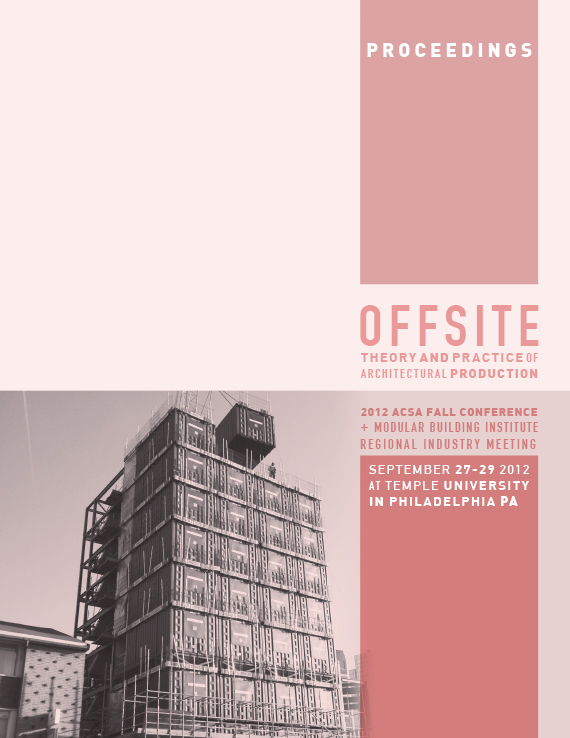Author(s): Michael D. Gibson
Peter McCleary’s theorization of technology articulates that it must be “contextualized”in the “architect’s reflection-in-action” rather than merely definedthrough tools and the way in which they are deployed.1 While new technologiesfor design and fabrication are revolutionizing the building industry,McCleary’s call for “reflection-in-action” suggests architects must seek a criticalapproach rather than simply appropriate these new technologies with indifferenceto how and to what end they are applied. Implicit in such a theorizationis that the ultimate trajectory of prefabrication technology and its closecousin, Building Information Modeling, must be to impact the rationalizationand performance of architecture – to critically engage construction – insteadof merely streamline the workflows of service-oriented firms.The proposed paper presents a construction critical case study: a commissionedresidence that synthesizes advanced performance-driven design technologiesand off-the-shelf industrial construction technology. A manufacturedsteel construction system, identical to those used for rapidly erected warehousesand industrial buildings, will serve as the armature for the project.In the project, the imperatives of production and performance have been thebasis for reconsidering construction and its assemblies from the ground up,in a demonstration of McCleary’s ‘reflection in action.’ Rather than a processof compromise, integrating the industrial steel structure has been a catalystfor innovative solutions to daylighting, thermal performance, interior finishes,and spatial development. The project will break ground in the Spring of 2013and the author is the lead designer and technology consultant.Further, the project will extend the author’s argument posited at the 2008Northeast ACSA Conference (also the University of Massachusetts WoodStructures Symposium). In this earlier paper, the author explored collaborationwith local prefab manufacturers in the development and prototyping oftwo experimental prefab systems deployed to critically rethink two basic constructionmeans: light wood frame panelization and manufactured wood trussing.The ultimate conclusion of this work was that via technology, constructioncan reasonably be challenged and innovated by design. Secondly, technologycan become a collaborative framework where manufacturers allow the‘hacking’ of their production methods by designers who, working within theconstraints of production, can with little risk push the performance of architecturefrom many angles, including sustainability, program, and aesthetics.The current project realizes this exact opportunity: technology will allow thealignment of performance and the means of construction, a strategy that isshaping the project at many scales. In the spirit of Kieran and Timberlake,the work will ultimately show technology’s role in “reorganizing the processof making.”2 By engaging and integrating prefabrication technology criticallyinstead of merely appropriating it, the paper intends to extend and refinea theoretical framework for ‘critical’ prefab architecture.1 McCleary, Peter. “Some Characteristics of a New Concept ofTechnology”. in Stein, Jay M. and Kent F. Spreckelmeyer eds.Classic Readings in Architecture. McGraw-Hill; New York, 1999.2 Kieren, Stephen and James Timberlake. Refabricating Architecture.McGraw Hill; New York, 2004.Housing Session II
Volume Editors
John Quale, Rashida Ng & Ryan E. Smith
ISBN
978-0-935502-85-5

 Study Architecture
Study Architecture  ProPEL
ProPEL 
